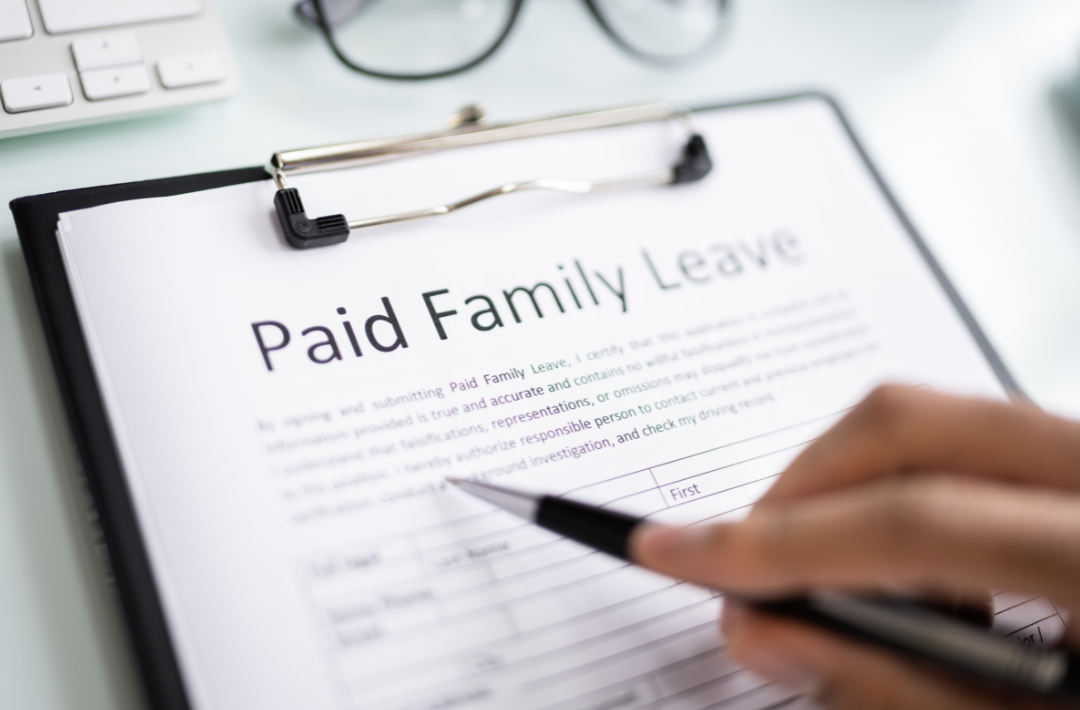Understanding California Paid Family Leave: A Comprehensive Guide
Posted on April 15, 2025

California Paid Family Leave (PFL) is an essential program designed to support employees and their families during life’s most significant moments. Whether bonding with a newborn, caring for a seriously ill family member, or assisting a loved one during a military deployment, PFL provides financial relief when needed most.
This guide is tailored for HR professionals, California employees, and small business owners to help them better understand the PFL program. By the end of this article, you’ll clearly understand eligibility, application processes, employer responsibilities, and the benefits offered through California’s Paid Family Leave program.
What is California Paid Family Leave (PFL)?
The California Paid Family Leave (PFL) program is part of the State Disability Insurance (SDI) program and offers short-term wage replacement benefits to employees who need time off for specific family-related responsibilities. Unlike unpaid leave provided under the federal Family and Medical Leave Act (FMLA), PFL ensures that employees receive partial income while caring for their loved ones. This program is designed to help employees balance work and family responsibilities without sacrificing their financial stability.
Who is eligible for PFL?
Employees in California who pay into the SDI program are eligible for PFL benefits. This includes private sector employees, state employees, and some self-employed individuals. Eligibility requirements include having paid into SDI within the last 5 to 18 months and meeting minimum earnings requirements.
How long can employees receive PFL benefits?
Employees can receive up to six weeks of PFL benefits within a 12-month period. However, if an employee needs more time off due to a serious health condition or bonding with a new child, they may be eligible for additional leave under the Family and Medical Leave Act (FMLA) or California’s New Parent
What types of leave does PFL cover?
PFL provides benefits to employees for three main types of leave:
- Bonding with a New Child: Employees can take PFL to bond with a child during the first year after birth or after the placement of a child through adoption or foster care. This ensures that parents have time to establish a connection and care for their new family member.
- Caring for a Seriously Ill Family Member: PFL benefits are available for employees who need to care for a family member with a serious health condition. This includes providing physical or psychological care for individuals such as a spouse, domestic partner, child, or parent.
- Supporting a Family Member Called to Active Military Duty: Employees may also use PFL to assist a family member in preparation for qualifying events related to military deployment. This provides financial support for families during challenging transitions.
Looking for expert HR consultants for your small to mid-sized business? Learn more about EQHR Solutions.
Key Objectives of PFL:
- Provide financial support during family-related leave.
- Promote work-life balance by allowing employees to care for their families without financial strain.
- Support both employees and businesses in managing critical family responsibilities.
Understanding who qualifies for PFL benefits ensures employees and employers can make the most of this program.
Who is Eligible?
- Employees who have contributed to the State Disability Insurance (SDI) program through payroll deductions.
- Self-employed individuals who have opted into the State Disability Insurance Elective Coverage (DIEC) program.
Key Requirements for Employees:
- Must have earned enough wages in the base period to establish a claim.
- Must provide documentation and evidence to support the need for leave, such as birth certificates, medical certifications, or deployment orders.
Coverage for Self-Employed Individuals:
Self-employed individuals can voluntarily enroll in the DIEC program to access PFL benefits. For eligibility, they must pay into the program consistently and meet similar requirements as regular employees.
How to Apply for PFL Benefits
Applying for PFL is straightforward, but it requires careful attention to detail to ensure all requirements are met.
Step-by-Step Application Process:
- Gather Required Documentation:
Proof of the qualifying event (e.g., medical certification, proof of child adoption, or military documents).
Your identification and employment history. - Submit a Claim Online or by Mail:
Create an account by going to California’s Employment Development Department (EDD) website.
Complete the necessary application forms and upload supporting documents. - Review and Wait for Approval:
The EDD will review your claim and notify you of approval or additional documentation needed.
If you need more guidance, visit the official EDD website for step-by-step application instructions and additional resources.
Employer Obligations and Responsibilities
While PFL benefits are employee-funded, employers must understand their role in facilitating the program.
Key Employer Responsibilities:
- Notify Employees: Employers must inform employees about their rights and the availability of PFL benefits.
- Facilitate Applications: Ensure employees know where and how to apply for PFL.
- Job Protection: While PFL does not provide job protection, employers must comply with laws such as the California Family Rights Act (CFRA) or FMLA if applicable.
Impact on Businesses:
No Out-of-Pocket Cost for PFL Benefits: PFL benefits are fully funded through employee SDI contributions, so employers are not required to pay salaries during the leave period.
- Maintain Coverage Compliance: HR teams should comply with relevant state regulations to avoid penalties.
Benefits and Payments
I would like to know how much your employees can receive and for how long it is essential when navigating PFL.
Duration of Benefits:
- Eligible employees can receive up to 8 weeks of wage replacement within 12 months.
Payment Amount:
- PFL currently offers up to 70% of an employee’s weekly wages, depending on their income level.
- Employees can calculate their specific benefits using the EDD’s benefit calculator.
- Payment Schedule:
- PFL benefits are paid out every week directly to the employee.
- Payments will typically be made within two weeks of submitting a claim for benefits.
Penalties for Noncompliance:
Failure to comply with state regulations concerning PFL can result in serious penalties for employers, including fines and legal action against the company. HR teams need to stay informed about any updates or changes to PFL laws and always remain compliant.
Conclusion:
PFL provides significant support to employees during life-changing events and promotes work-life balance.
Types of Claims:
- Bonding Claims for new child bonding.
- Caregiving Claims for attending to a seriously ill family member.
- Military Assist Claims for supporting a family member in the military.
Additional Resources and Support
Navigating employment law and family leave benefits can seem daunting, but plenty of tools are available to assist businesses and employees.
Helpful Resources:
- California’s Employment Development Department (EDD): Official information, applications, and guides.
- Small Business Administration (SBA): Resources for small businesses navigating compliance with leave laws.
- State programs offering educational webinars and toolkits for employers and HR professionals.
Empower Your Workforce with Knowledge
California Paid Family Leave is a critical program for protecting employees during pivotal life events, ensuring financial stability while prioritizing family responsibilities.
For HR teams, small business owners, and employees alike, understanding the ins and outs of PFL is essential in promoting a supportive and efficient workplace. Staying informed about your rights and responsibilities will help everyone involved use this vital program best.
To learn more or seek additional guidance, visit the California Employment Development Department’s website or consult a trusted employment law expert today.
Key Points of Paid Family Leave (PFL)
- Purpose: PFL provides employees with partial wage replacement when taking time off to care for a seriously ill family member, bond with a new child, or address specific military family needs.
- Eligibility: Most employees who contribute to the State Disability Insurance (SDI) program are eligible for PFL benefits, regardless of their citizenship or immigration status.
- Duration of Benefits: Eligible individuals can receive up to 8 weeks of benefits within 12 months.
- Funding: PFL is funded through employee payroll contributions to SDI; there is no direct cost to employers.
- Job Protection: While PFL does not guarantee job protection, employees may qualify for protections under related laws such as the Family and Medical Leave Act (FMLA) or the California Family Rights Act (CFRA).
- Application: To receive benefits, employees must submit a claim to the California Employment Development Department (EDD) and provide necessary documentation, such as medical certifications or proof of bonding.
Are you ready to fortify your business’s financial health? Schedule a complimentary consultation today with EQHR Solutions’ expert HR consultants, and let’s ensure your payroll system is fine-tuned for success in 2025 and beyond.
Call us at: 855-461-5508

 Understanding California Paid Family Leave: A Comprehensive Guide
Understanding California Paid Family Leave: A Comprehensive Guide How California Payroll Audit Consulting Services Can Boost Your Small Business in 2025
How California Payroll Audit Consulting Services Can Boost Your Small Business in 2025 How California Payroll Audit Consulting Services Can Help Mitigate Risk in 2025's Economic Uncertainty
How California Payroll Audit Consulting Services Can Help Mitigate Risk in 2025's Economic Uncertainty






